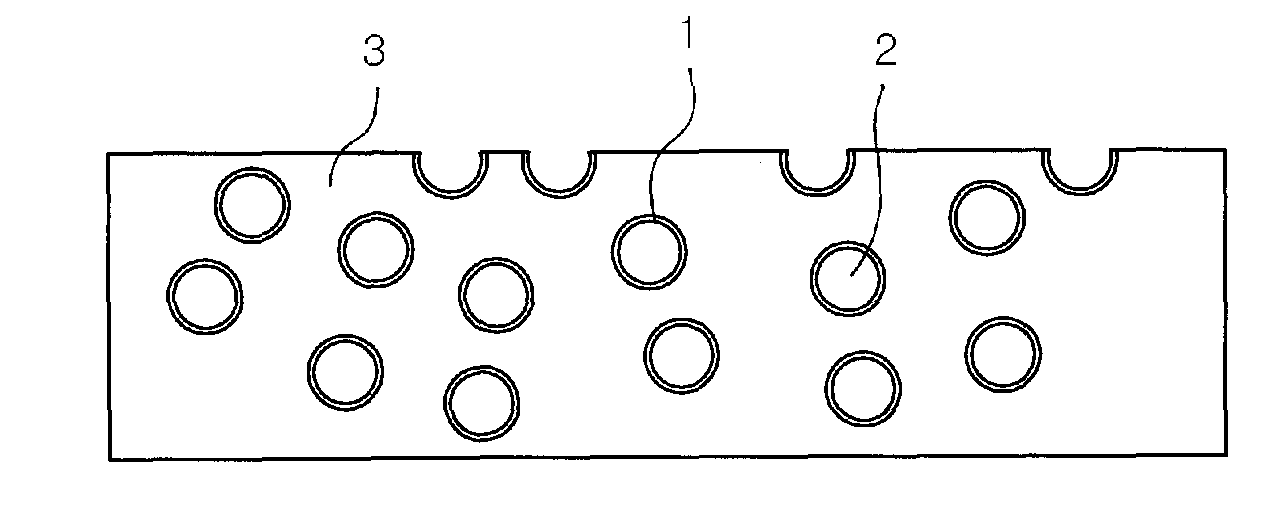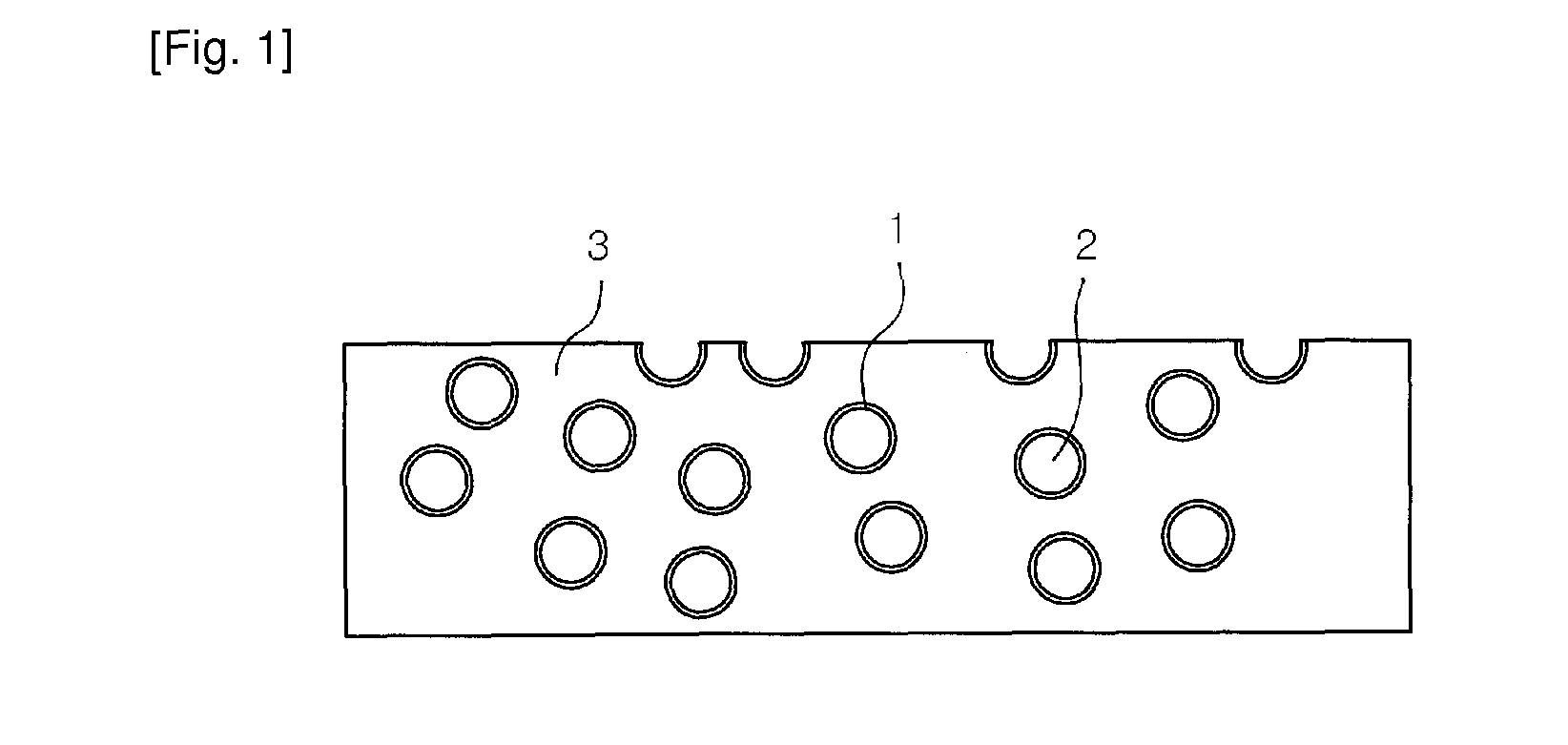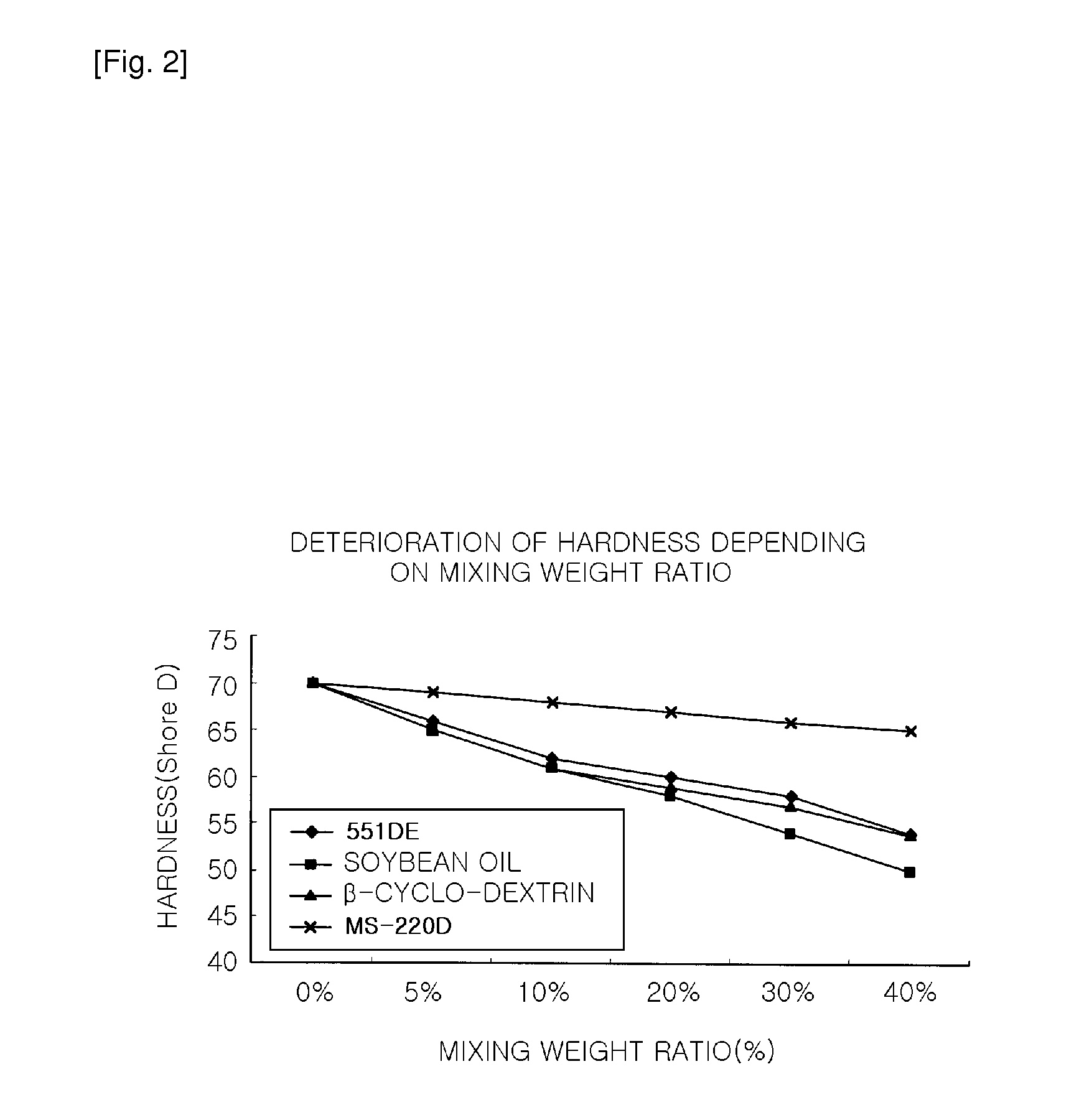Chemical Mechanical Polishing Pads Comprising Liquid Organic Material Encapsulated in Polymer Shell and Methods For Producing The Same
a technology of mechanical polishing and liquid organic material, which is applied in the direction of chemistry apparatus and processes, manufacturing tools, and other chemical processes, can solve the problems of increasing flatness error, low polishing speed, and difficulty in uniform preparation of pads with a regular density deviation, etc., and achieves high polishing efficiency, high hardness, and high density
- Summary
- Abstract
- Description
- Claims
- Application Information
AI Technical Summary
Benefits of technology
Problems solved by technology
Method used
Image
Examples
example 1
[0045]Poly(tetramethylene glycol) (PTMEG) (a functional group 2, Mw=1000) of 1000 g were poured into a reaction vessel, and methylenediphenyl diisocynate (MDI) of 1262 g were poured into the reaction vessel. A prepolymer, a main material, with both terminals formed of isocynates was prepared by stirring the two liquids for three hours at a temperature of 80° C. Hereto, 500 g of MS-220D Dongjin Semichem Co., Ltd. that was a liquid organic material encapsulated in a polymer shell was poured and mixed using a high-speed mixer. MS-220D was a core formed of a polyacrylate shell encapsulating a liquid organic material that was a mixed solvent of hydrocarbon liquid organic materials CnHm in which n is an integer from 9 to 16 with a boiling point of 160° C. or more.
[0046]A hardener to be mixed with the main material was prepared by pouring and heating 4,4′-methylene-bis(O-chloroaniline) of 1080 g into the vessel at a temperature of 130° C. for three hours and removing pores therefrom.
[0047]...
example 2
[0049]A urethane cake was prepared by using a method similar to that of Example 1, exclusive of an input amount of MS-220D. In this case, the input amount was 1000 g.
example 3
[0050]A urethane cake was prepared by using a method similar to that of Example 1, exclusive of an input amount of MS-220D. In this case, the input was 1500 g.
PUM
| Property | Measurement | Unit |
|---|---|---|
| decomposition point | aaaaa | aaaaa |
| density | aaaaa | aaaaa |
| size | aaaaa | aaaaa |
Abstract
Description
Claims
Application Information
 Login to View More
Login to View More - Generate Ideas
- Intellectual Property
- Life Sciences
- Materials
- Tech Scout
- Unparalleled Data Quality
- Higher Quality Content
- 60% Fewer Hallucinations
Browse by: Latest US Patents, China's latest patents, Technical Efficacy Thesaurus, Application Domain, Technology Topic, Popular Technical Reports.
© 2025 PatSnap. All rights reserved.Legal|Privacy policy|Modern Slavery Act Transparency Statement|Sitemap|About US| Contact US: help@patsnap.com



